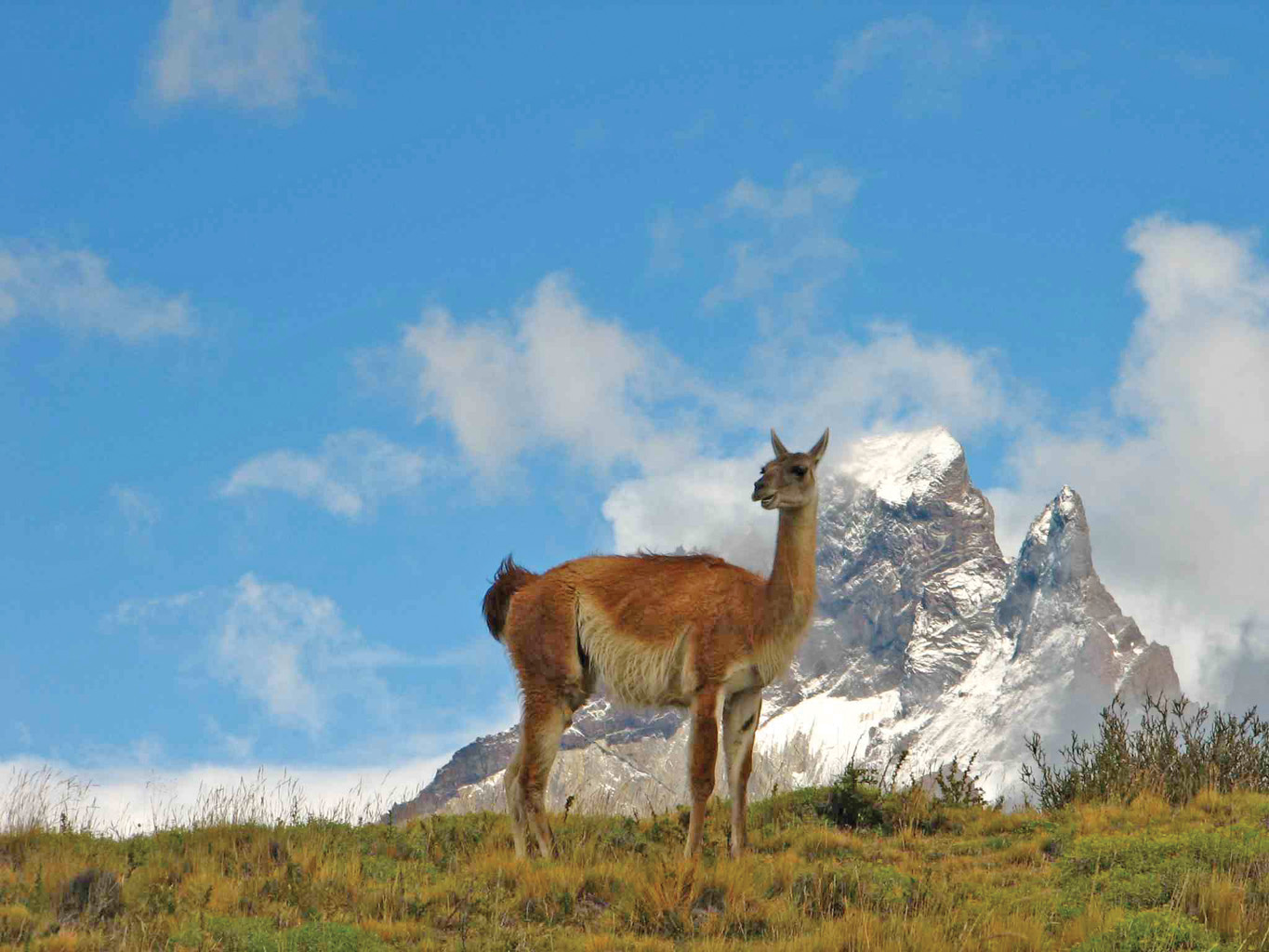Chapter 3
Adaptations to Terrestrial Environments
56

57
CHAPTER CONCEPTS
- Most terrestrial plants obtain nutrients and water from the soil.
- Sunlight provides the energy for photosynthesis.
- Terrestrial environments pose a challenge for animals to balance water, salt, and nitrogen.
- Adaptations to different temperatures allow terrestrial life to exist around the planet.
The Evolution of Camels
When you think of camels you might envision the iconic animals of the African and Asian deserts. The ancestor of all camel species actually originated in North America about 30 million years ago and camels roamed many parts of North America until about 8,000 years ago. Current evidence suggests that some of these ancestors crossed the Bering land bridge from Alaska about 3 million years ago and made their way into Asia and Africa. These individuals evolved into two modern-day species of camels: the endangered Bactrian camel (Camelus bactrianus) and the much more common dromedary camel (C. dromedarius). At the same time, other individuals moved down to South America and evolved into a second group: guanacos (Lama guanicoe), llamas (L. glama), vicuñas (Vicugna vicugna), and alpacas (V. pacos).
“One of the many amazing adaptations of camels is their ability to cool their brains.”
All of these animals live in dry environments and have evolved a number of adaptations that help them cope with the harsh conditions. For example, the dromedary camel—the most-studied of the group—risks overheating in the very hot deserts where it lives. During the day, the rays of the Sun strike its body and warm its surface. The camel can respond behaviorally by facing into the Sun and presenting a smaller profile for the Sun’s rays to warm. The sandy desert soil is also hot and radiates the heat it absorbs, which makes the camel even hotter. Fortunately, the camel has a very large body relative to its surface area, so these heat inputs raise its body temperature slowly. Although camels, like all mammals, try to maintain a constant body temperature, they can tolerate a rise in body temperature of 6°C before experiencing any harmful effects. In contrast, most mammals can only tolerate an increase of about 3°C. At night, as the air and sand cool rapidly, the camel radiates its excess heat into the air or lies down and transfers its excess body heat to the sand.
One of the many amazing adaptations of camels and other mammals in hot environments is their ability to cool their brains. Whereas much of the body can tolerate short-term increases in temperature, the brain cannot. The camel has evolved an arrangement of veins and arteries that helps solve this problem. As the animal breathes, veins positioned beside the long nasal cavity are cooled by means of evaporating water vapor. The veins that carry cool blood then travel toward the back of the camel’s head where they come into close contact with the arteries that supply blood to the brain. Although the blood does not mix between the veins and arteries, heat is exchanged between the two types of vessels. This cools the arterial blood before it travels to the brain and keeps the brain several degrees cooler than the rest of the body.

Lack of water is also a challenge in the desert environment. As an adaptation, the dromedary camel can store large amounts of water in its body, most of which resides in its tissues. As water is lost from the bloodstream, the water from the tissues enters the blood. As much as 30 to 40 percent of the camel’s body mass is water that can be used over several days when it is unable to drink water. In other mammals, a mere 15 percent loss of water can be lethal. Camels also conserve the water that they take in by producing relatively dry feces and urine that is high in waste products and low in water. In addition, while sweating can be an effective way to cool the body through evaporation, camels that are low on water can reduce the amount that they sweat. Collectively, these adaptations allow the camels to survive when water is scarce.
58
Camels represent just one case in which terrestrial organisms have evolved numerous adaptations to the challenges posed by terrestrial environments. In this chapter, we will explore the challenges of living on land and the adaptations of terrestrial plants and animals that make their lives possible.
SOURCES: J. W. Cain et al., Mechanisms of thermoregulation and water balance in desert ungulates, Wildlife Society Bulletin 34 (2006): 570–581.
S. Ouajd and B. Kamel, Physiological particularities of dromedary (Camelus dromedarius) and experimental implications, Scandinavian Journal of Laboratory Animal Science 36 (2009): 19–29.
 As we discussed in Chapter 2, life on Earth probably arose in the water. Following these early origins, life forms evolved adaptations that allowed them to live on land. The transition from water to land posed a number of new challenges. Plants evolved to obtain water and nutrients from the soil, and to conduct photosynthesis under hot and dry conditions. Animals evolved to balance water, salts, and wastes, and to adjust to extreme temperatures in terrestrial environments. In this chapter, we will examine the diversity of adaptations that allow plants and animals to live in terrestrial environments.
As we discussed in Chapter 2, life on Earth probably arose in the water. Following these early origins, life forms evolved adaptations that allowed them to live on land. The transition from water to land posed a number of new challenges. Plants evolved to obtain water and nutrients from the soil, and to conduct photosynthesis under hot and dry conditions. Animals evolved to balance water, salts, and wastes, and to adjust to extreme temperatures in terrestrial environments. In this chapter, we will examine the diversity of adaptations that allow plants and animals to live in terrestrial environments.